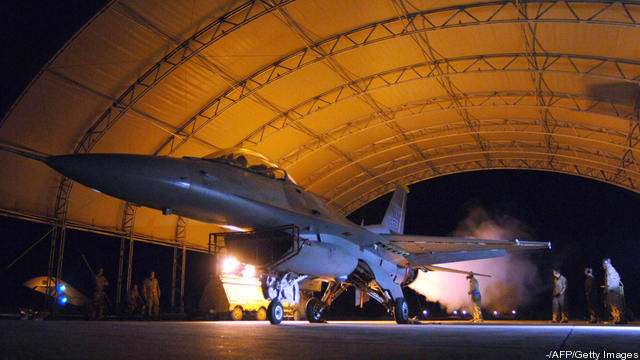U.S. Must Loosen Export Rules; Risks Being Outgunned, Analyst Says
Posted on
 WASHINGTON: The U.S must change its standards on what kinds of military hardware it won’t ship to its allies or risk being outgunned and out-manned in future wars, according to a top defense analyst.
WASHINGTON: The U.S must change its standards on what kinds of military hardware it won’t ship to its allies or risk being outgunned and out-manned in future wars, according to a top defense analyst.
The Defense and State departments have ramped up cooperation with its allies in recent years through Foreign Military Sales and international joint programs such as the F-35 Joint Strike Fighter. The Pentagon recently awarded an $835 million deal to defense giant Lockheed Martin to build F-16s for the fledgling Iraqi air force. Deals are also in the works to provide aerial drones, helicopters and cargo aircraft to various countries. That’s all well and good, but “the US could be more forthcoming regarding what it is willing to export to its allies and friends,” defense analyst and former Pentagon international programs official Frank Cevasco said.
There still are a slew of capabilities the Pentagon is either unwilling or unable to let go of due to current laws governing exports of American military hardware. Those decisions could come back to haunt American military leaders once the next global hot spot boils over, according to Cevasco.
“If we keep along the current path [partner nations] will be less capable five years from now, leaving the U.S. with the choice go it alone or don’t get involved,” he said. “There is a substantial risk associated with the U.S. proceeding along a path by itself. The far better approach is to proceed forward as best as we can and encourage our allies to leverage what the US has already developed, but do so in a way that others interpret as treating them as equals not subordinates.”
Cevasco pointed out that approach doesn’t mean the Pentagon should “frivolously relax” its standards on who should get U.S. equipment. But Pentagon officials must be willing to take at least some risks in arming American allies, he said. “We should be smart enough to differentiate between . . . sharing technology with trusted allies with capable domestic technology and industrial bases . . .with third world countries [who are] somewhat trusted but not needing the most advanced capabilities, and with potential adversaries,” according to Cevasco. The Pentagon and the White House seem to be getting the message.
In August, the Obama administration unveiled a new export reform strategy that is designed to double military and commercial exports over the next five years. The strategy includes reducing the list of what sensitive military hardware cannot be sent overseas. The plan will also outline new parameters for information technology systems. Finally, all military and commercial exports will be overseen by a single licensing agency and export enforcement coordination center, according to the White House. A new White House “export council” has also been created to help push the administration’s strategy forward.
For its part, Air Force also actively pursuing ways to expand its military cooperation agreements around the world. Closer ties with allied air forces will let the Air Force maintain — or in some cases expand — its global presence without dedicating men or materiel, Air Force Assistant Vice Chief of Staff Lt. Gen Richard Newton said.
The Pentagon stands to lose a lot as it struggles to cope with the White House’s deficit reduction goals and possible fallout from the Super Committee’s failure to cut $1.2 trillion from the federal budget. But the department can remain the world’s dominant military power, Cevasco said. It just needs a little help from its friends. “The way to stay ahead is to invest more effectively than the opposition; you cannot protect your way to superiority,” he added.
Subscribe to our newsletter
Promotions, new products and sales. Directly to your inbox.
